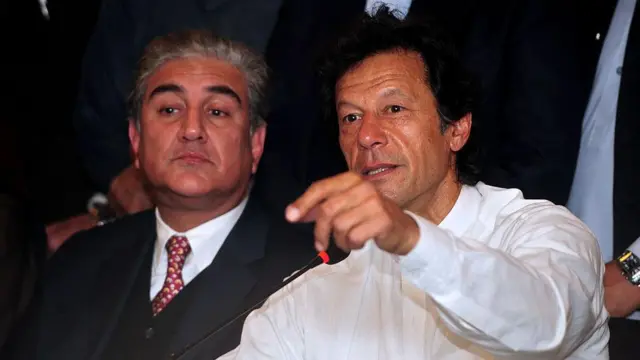Here’s a fact-based look at why iron-deficiency anemia is so widespread among pregnant women in Pakistan, grounded in national data and peer-reviewed research: 📊 How Common Is It? According to Pakistan’s National Nutrition Survey 2018, about 41.7% of women of reproductive age are anemic, with ruralRead more
Here’s a fact-based look at why iron-deficiency anemia is so widespread among pregnant women in Pakistan, grounded in national data and peer-reviewed research:
📊 How Common Is It?
- According to Pakistan’s National Nutrition Survey 2018, about 41.7% of women of reproductive age are anemic, with rural areas showing higher rates than urban ones (SAGE Journals).
- Focused research from Muzaffarabad found an overall anemia prevalence of 74.6% among pregnant women, reaching 80.3% in the third trimester (pjp.pps.org.pk).
- Another hospital-based study in Lahore reported 57.7% of pregnant women were anemic (34.4% mild; 23.3% moderate), with low income as a key predictor (PubMed).
- At Jinnah Hospital in Karachi, 85.3% of pregnant patients (150 sampled) had anemia—mostly moderate, and strongly associated with low household income and minimal meat consumption (JSciMed Central).
❓ Why It Happens: Key Drivers
1. Poor Pre-existing Nutritional Status
- Many women enter pregnancy already iron-depleted. Pregnancy demands (increasing blood volume and fetal needs) quickly exacerbate this deficiency—WHO estimates that around 40% of women already have low to no iron stores before pregnancy (Wikipedia).
- Dietary insufficiency is common: studies report low meat and iron-rich food intake in over 70% of anemic women in multiple regions (pjp.pps.org.pk).
2. Socioeconomic Factors & Food Insecurity
- Low income and food insecurity are consistently linked to anemia: poor households have less access to diverse, nutrient-rich diets (UNICEF, SAGE Journals).
- Rural women are disproportionately affected: limited healthcare access, lower diet quality, early or frequent pregnancies, and higher infection rates all raise risk (ottechnologist.com).
3. Parasitic Infections
- Hookworm and other intestinal parasites, common in rural Pakistan, lead to chronic blood loss and iron depletion. Globally, ~56% of pregnant women in developing regions suffer anemia, often linked to helminth infections (Wikipedia).
4. High Parity & Adolescent Pregnancy
- More pregnancies and closely spaced births limit time for women to rebuild iron stores—especially affecting younger mothers whose own nutritional needs are still elevated (nation.com.pk).
- Studies show maternal anemia correlates with age, and prevalence often rises in the third trimester and among mothers with multiple prior births (thejas.com.pk, longdom.org).
5. Dietary Absorption Issues
- Excessive tea consumption (rich in polyphenols) interferes with iron absorption, worsening anemia—even among women with moderate diets (longdom.org).
6. Limited Awareness & Antenatal Care
- Many women lack timely prenatal visits or iron supplementation. Counseling on diet, risks, and supplementation is insufficient or delayed (PMC, thejas.com.pk).
🩺 Consequences of Maternal Anemia
- Maternal risks: higher chance of pre-eclampsia, infections, hemorrhage, fatigue, and poor postpartum recovery (Wikipedia, PMC).
- Fetal risks: low birth weight, premature labor, developmental delays, and increased neonatal anemia—often linked to maternal iron status (Wikipedia, PMC).
🌟 What Needs to Be Done
| Intervention | Why It Matters |
|---|---|
| Nutrition education & food supplementation | Helps pregnant women adopt iron-rich diets and understand absorption |
| Iron/folic acid supplementation early in pregnancy | Reduces anemia during critical fetal growth periods |
| Deworming where appropriate (after first trimester) | Addresses hookworm contributions to chronic blood loss (Wikipedia) |
| Expand antenatal screening & follow-up | Early detection and treatment help reduce severity |
| Target poverty and rural regions | Address root socioeconomic and service access barriers |
| Delay repeat pregnancies and support adolescent mothers | Allows recovery between pregnancies and reduces overall risk |
✅ Bottom Line
Iron-deficiency anemia among pregnant women is far too common in Pakistan due to a convergence of low pre-pregnancy iron stores, poor diets, high parity, parasite infections, and limited health care access. Tackling it requires both individual-level care and broader structural support—including nutrition education, prenatal services, and poverty reduction.
Would you like information on local programs distributing prenatal supplements or interventions targeting rural areas in Pakistan?
See less


Here’s a clearer, evidence-based look at common misconceptions about contraceptives in Pakistan—their origins, prevalence, and how they affect women’s health and family planning. 🚼 1. Fertility Myths: “Contraceptives cause infertility or permanent sterility” A 2025 study in Peshawar found that overRead more
Here’s a clearer, evidence-based look at common misconceptions about contraceptives in Pakistan—their origins, prevalence, and how they affect women’s health and family planning.
🚼 1. Fertility Myths: “Contraceptives cause infertility or permanent sterility”
2. Method-specific Misbeliefs
3. Cultural & Religious Barriers
4. Health and Spiritual Concerns
5. Information Gaps and Provider Impact
📊 Summary Table
✅ What’s Needed to Fix This
💡 Bottom Line
In Pakistan, contraceptive myths—ranging from infertility fears to religious or spiritual taboos—are deeply rooted. These beliefs, coupled with low awareness, social pressures, and uneven access to proper contraceptive counseling, significantly limit family planning uptake and contribute to high rates of unintended pregnancies and maternal morbidity.
Efforts focused on education, male involvement, improved counseling, and working with community gatekeepers can break down these misconceptions—and empower women and couples to make informed choices about their reproductive health.
Would you like me to highlight programs or initiatives working to change these perceptions in Pakistan?
See less